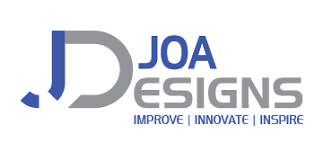Empowering Product Designers: Why SOLIDWORKS Training is a Must
In today’s fast-paced design and manufacturing landscape, innovation and precision are non-negotiable. Whether you're designing a medical device, a consumer gadget, or an industrial component, your ability to visualize, test, and refine a concept efficiently can determine your product's success. This is where SOLIDWORKS, one of the world’s leading 3D CAD (Computer-Aided Design) software platforms, becomes invaluable.
But simply having access to SOLIDWORKS isn’t enough. To truly unlock its full potential, product designers must invest in comprehensive solidworks training . This article explores why SOLIDWORKS training is more than a skill upgrade—it’s an essential tool for empowerment, innovation, and career advancement.
Mastering the Industry Standard
SOLIDWORKS is the go-to design tool for thousands of companies worldwide. From Fortune 500 firms to small startups, it’s widely recognized for its robust features, intuitive interface, and extensive capabilities in 3D modeling, simulation, and manufacturing integration.
Product designers trained in SOLIDWORKS gain immediate credibility. Proficiency in the software is often a key requirement in job descriptions and a benchmark used by employers to gauge technical competence. With formal training, you not only become proficient—you gain a competitive edge in an increasingly crowded market.
Designing for Manufacturability
Designing a product that looks great on-screen is one thing—ensuring it can be manufactured cost-effectively is another. SOLIDWORKS training covers essential design-for-manufacturing (DFM) principles that help bridge the gap between concept and production.
Through proper training, designers can learn how to:
-
Create tool-friendly geometries for CNC, injection molding, or 3D printing.
-
Analyze tolerances and material usage to avoid waste and failure.
-
Collaborate effectively with engineers and manufacturers by producing clear, standardized documentation.
By mastering these aspects, you avoid costly redesigns and production setbacks.
Accelerating the Design-to-Prototype Process
One of the greatest challenges for product design consultants is reducing time to market. The ability to swiftly go from concept to prototype can determine a product’s success, especially in industries driven by rapid innovation.
SOLIDWORKS training enables designers to work smarter and faster. You learn how to:
-
Use parametric modeling to make quick design adjustments.
-
Build intelligent assemblies that simulate real-world movements.
-
Leverage automated drawing tools to create production-ready blueprints.
-
Apply simulation tools to test product behavior before physical prototyping.
These skills minimize delays, reduce errors, and speed up development timelines.







Connielob
More posts like this would make the blogosphere more useful. https://proisotrepl.com/product/domperidone/